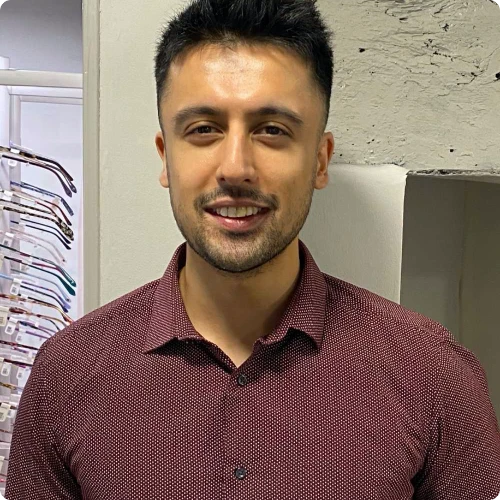Playing, working, reading, discovering the world… Did you know that more than 80% of children’s learning occurs through vision? Myopia can seriously impact your child’s eyesight and life. More children are getting myopia at a younger age – partly due to a rise in sedentary indoor lifestyles and an increasing amount of time spent in near activities. The younger a child develops myopia, the further it evolves and the higher it becomes.
Children developing short-sightedness at a younger age may have an increased risk of developing high myopia and the risk of developing visual impairments in adulthood. “Myopia (short sight) Control”, is the term used to describe treatments available to slow the progression of short-sightedness in children. Myopia typically starts during childhood or adolescent years and increases as the eyes continue to grow. With increased levels of myopia, the risks of conditions like retinal detachment, myopic maculopathy, cataract, and Glaucoma increase. Where one or both parents are myopic, there is an increased risk of children being myopic. It is believed that by 2050, 1 in every 2 people in the world will be short-sighted.
Can myopia progression be stopped?
While myopia is likely to increase during these growth years, there is now clear evidence to show that the rate of progression can be slowed for many children, significantly reducing the lifelong risks to eye health. Increasing the number of hours spent outside in early childhood (ideally before myopic onset) has been shown to reduce the risk of onset of myopia. This is thought to be due to the cumulative effect of daylight on the eye, helping to strengthen the eyeball, along with the requirement of the eyes to look at a greater distance when outdoors. Reduce the numbers of hours spent on digital devices to a minimum.
There is no current minimum safe length of time children can use digital devices…LESS IS MORE! There is a minimum recommendation of 15 hrs of outside, daylight time for children per week. A useful rule of thumb is 30:30 – spend no more than 30 minutes of screen time, with the screen at no less than 30cm distance from the eyes, then go outside and play. We all want the best for our children. Unfortunately, we can’t always identify everything, control everything, know everything. Myopia can strongly and permanently affect our children’s vision and life. Treatments available to slow down myopia progression are also available.
Today, with Stellest™ lenses, it’s possible to control their myopia progression from an early age. This is a major and a crucial choice for our children, because the earlier you control their myopia progression, the less their vision will be impacted.
At C G Optical, we are happy to discuss the options of Myopia Control contact lenses and Myopia Control spectacle lenses. These options work based on “peripheral defocus”, where the stimulus for the eye to lengthen is reduced. Myopia control contact lenses and spectacle lenses have been proven to slow the progression of short sightedness in children by an average of 50-60%.
Get in touch today to discuss the options of Myopia Control for your child or book an eye examination.
*Compared to single vision lenses, when worn 12 hours a day. Two-year prospective, controlled, randomised, double-masked clinical trial results on 54 myopic children wearing Stellest™ lenses compared to 50 myopic children wearing single vision lenses. Efficacy results based on 32 children who declared wearing Stellest™ lenses at least 12 hours per day every day. Bao J. et al. (2021). Myopia control with spectacle lenses with aspherical lenslets: a 2-year randomised clinical trial. Invest. Ophthalmol. Vis. Sci.; 62(8):2888.







